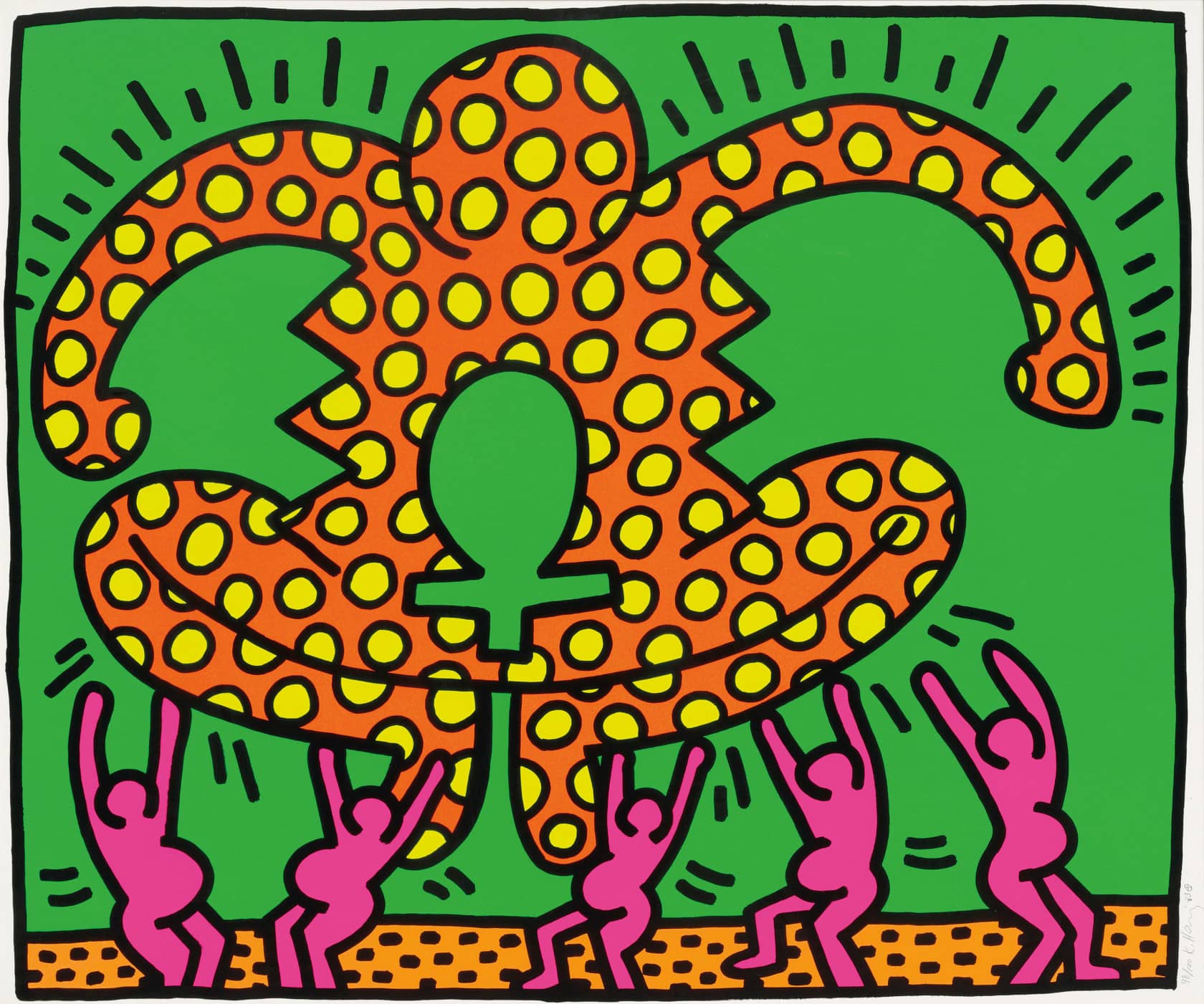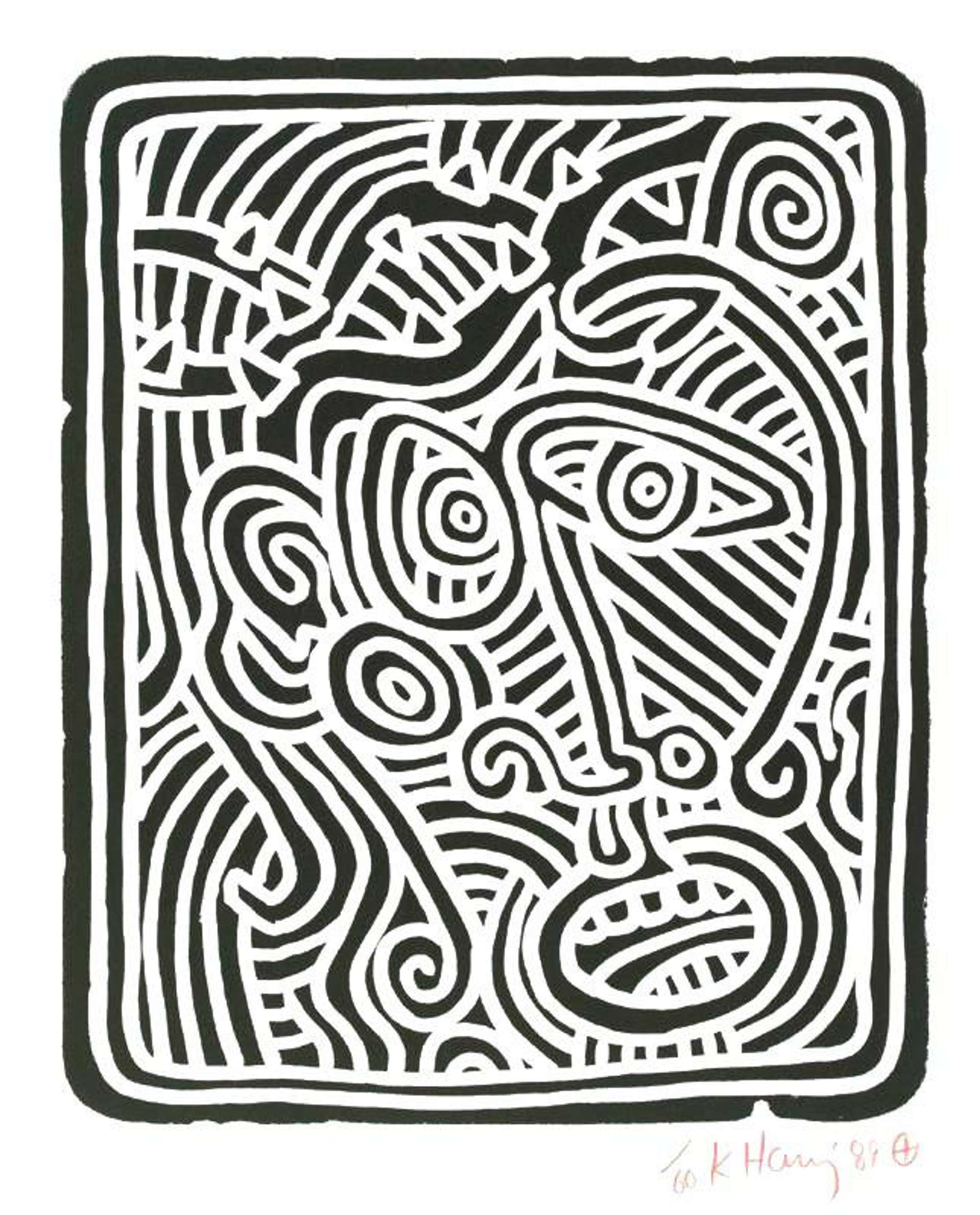
Social and Political Activism
Keith Haring's printmaking subjects were deeply rooted in his fervent social and political activism. His prints became powerful vehicles for expressing his concerns about issues such as AIDS, racism, homophobia, and the environment. Haring's art served as a visual protest, challenging societal norms and advocating for equality and justice. His prints captured the spirit of the times, encapsulating the urgency of social change and inspiring others to join the fight.

Symbolic Iconography
Haring's printmaking was characterised by his unique symbolic iconography, featuring figures such as radiant babies, barking dogs, dancing figures, and crawling reptiles. These simple yet instantly recognizable symbols became Haring's artistic vocabulary, transcending language and cultural barriers. His use of symbols was deliberate, allowing him to convey complex messages and emotions with a universal visual language. Through his prints, Haring created a visual dialogue that spoke directly to the viewer's emotions and consciousness.

Expressive Line Work
One of the defining features of Keith Haring's printmaking was his distinctive, energetic line work. He utilised bold, fluid lines that seemed to dance across the surface of the print. Haring's lines conveyed a sense of movement and vitality, capturing the spontaneity and immediacy of his creative process. Whether through linocut, screen printing, or lithography, Haring's masterful control over line weight and composition brought his subjects to life, infusing them with an infectious energy.

Collaborative Printmaking
Keith Haring's printmaking extended beyond his individual artistic endeavours. He embraced collaboration and frequently worked with other artists, musicians, and performers on print projects. These collaborations allowed Haring to merge his distinct visual language with other creative disciplines, resulting in a fusion of art, music, and activism. Through collaborative printmaking, Haring expanded the reach of his message, amplifying the impact of his art and fostering a sense of collective creativity.
Accessibility and Reproducibility
Printmaking held a special place in Keith Haring's practice because it offered a means of creating affordable and accessible art. Haring believed that art should be for everyone, and he actively sought ways to make his work more widely available. Printmaking allowed him to reproduce his images in multiples, making his art more accessible to a broader audience. Through the democratisation of his art, Haring aimed to break down the barriers between high and low culture and bring art into everyday life.
Keith Haring's printmaking subjects and techniques embodied his unwavering commitment to social activism and his belief in the power of art to effect change. Through symbolic iconography, expressive line work, collaborative projects, and a focus on accessibility, Haring's prints became catalysts for social dialogue and visual activism. Haring's legacy as an artist and activist continues to inspire, reminding us of the profound impact art can have on society. His prints serve as timeless reminders of the importance of unity, equality, and the ongoing fight for social justice.
Explore our collection of Keith Haring screenprints and contact our gallery via sales@andipa.com or call +44 (0)20 7589 2371 for further information.